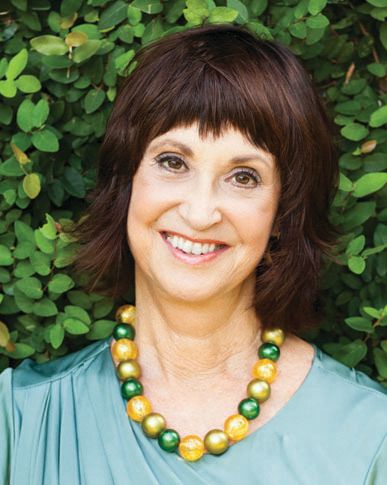Do Doctors Care?

One of my favorite relatives has been suffering from bouts of atrial fibrillation. He’s always been fair-minded, so I was surprised when he told me, “I’ve realized my doctors don’t really want to cure this, because patients like me are such an ongoing source of their income.” I tried to tell him doctors don’t think like that, but I couldn’t change his mind. Now I’ve met someone who can—Dr. Karen Hamad, chief of staff at Sarasota Memorial Hospital.
As the voice of the hospital’s 900 physicians (and the wife of a physician as well), Hamad, 46, is exceptionally aware of the challenges that face doctors. “It’s harder than ever to be a doctor,” says Hamad, who fixed her sights on medicine at the age of 6. An internist and pediatrician, she cares for about 4,000 patients a year, including “multigenerational families,” she says, and now even “grand-patients,” the children of patients she treated when they were young.
Hamad starts her day early, rising at 4:30 a.m. and working out before heading to Sarasota Memorial to see patients and perhaps attend a meeting about her chief of staff post. By 8:30, she’s back home to drive her two daughters to school. Then she sees patients until 4. In addition to frequent after-hours meetings, Hamad cooks dinner many nights, and because her daughters have different after-school schedules, she sits down with each girl separately while they eat. By 9:30, she’s in bed.
I’m exhausted just hearing her schedule, but Hamad laughs and tells me it’s typical for doctors, especially doctors who are moms. More challenging than the hours, she says, are the new realities affecting physicians.
Doctors are no longer viewed as lofty gods, she says; and in many ways, that’s good. Hospitals are more “nurse- and patient-centric,” she says, and won’t tolerate old-school behavior, like temperamental surgeons throwing instruments around. As chief of staff, she sometimes has to confront doctors who treat co-workers disrespectfully; the worst offenders are sent to “charm school,” as she jokingly calls programs designed to change their behavior.
But as the boundaries between patients and doctors blur, many patients feel entitled to 24/7 access, something social media has made all too possible. Hamad gets a constant stream of Facebook messages, e-mails and texts about her patients’ issues. “One man texted me at 11 p.m. asking for help with an urgent sexual problem!” she says. “We are never not doctors and we never get to turn off.”
Doctors appreciate educated patients, but the Internet also exposes people to massive misinformation. Patients come in seized by “Google panic,” she says, clutching computer printouts or quoting Dr. Oz. “We already have limited time with them,” she says, “and now we’re spending a lot of that time dispelling false information.”
Other forces threaten doctors’ ability to deliver their best care, says Hamad, from the modern “culture of distrust” that encourages defensive medicine—for example, ordering tests that probably aren’t necessary—to the need to pack in more and more patients as reimbursement rates go down. “Insurance now dictates medical care,” says Hamad. Physicians and their staff spend hours every day trying to get insurance companies to authorize the treatment patients need.
But while national surveys show burnout is rising and morale is falling among physicians, Hamad says the overwhelming majority care passionately about their patients. “We take an end-of-life diagnosis home with us,” she says. “Our work is even more about emotion than knowledge.” And she says her faith in God “reminds me every day that compassion and grace and humility are my biggest assets as a physician.”
She loves sitting in in the doctor’s lounge at the hospital and hearing colleagues share stories about patients, celebrating amazing outcomes and agonizing about treatments that failed. “The camaraderie is incredible,” she says. “We don’t have any callous doctors here.”
In 2008, Hamad’s faith in her profession was tested when her father died as a result of a cascade of medical errors. In a tumult of grief, she felt that medicine—“my people and my life”—had failed him, and that she, too, was culpable. “I thought long and hard about not being a doctor anymore,” she says. But she began seeing signs, like thank-you cards from patients, that made her once again accept what she’s known since she was a child. “I was put on earth to do this,” she says.



